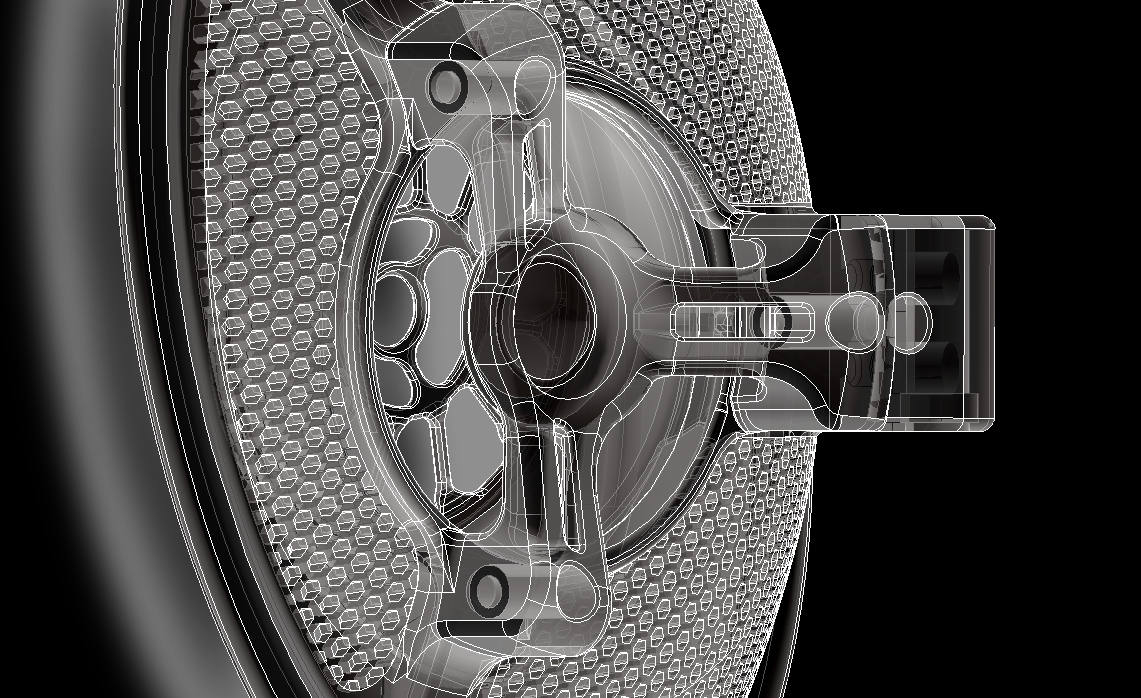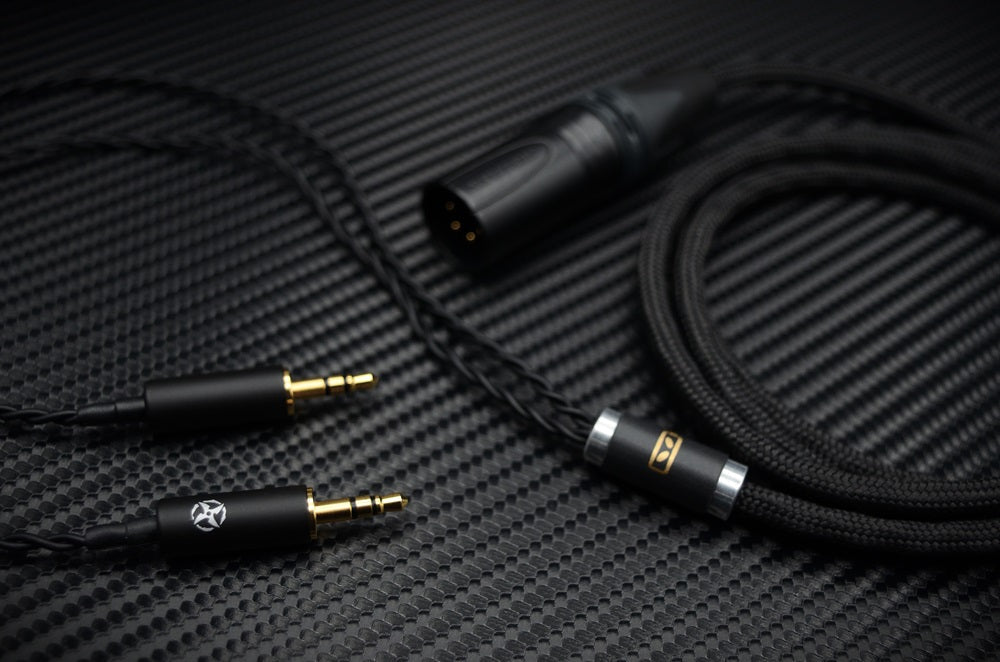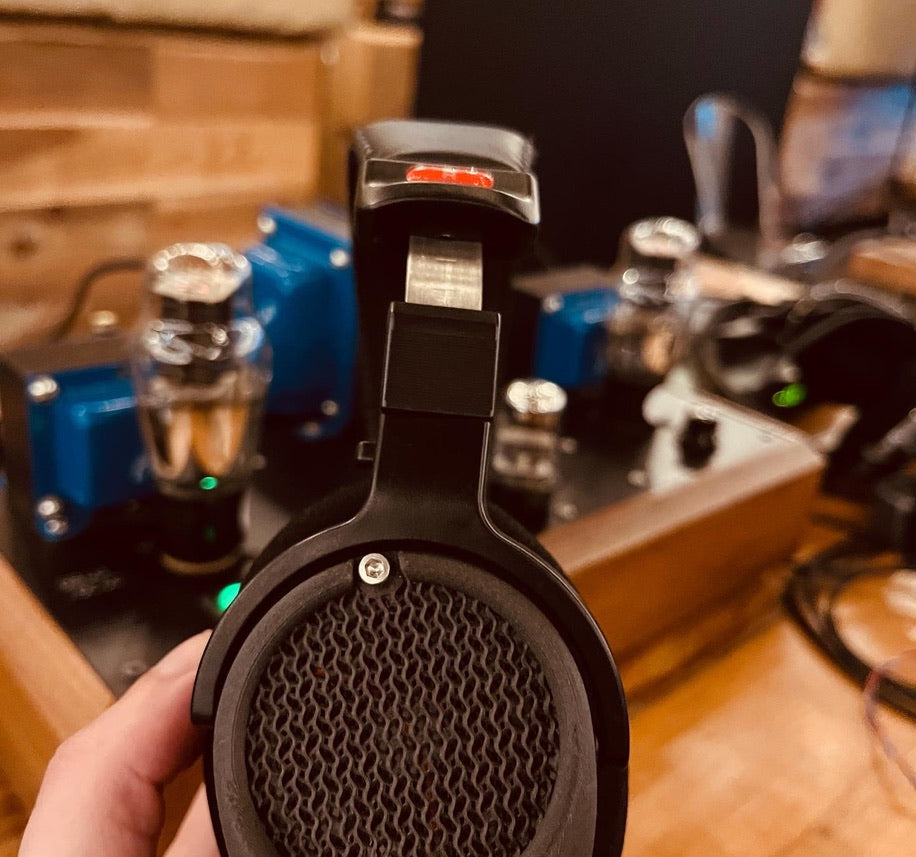
A while ago, someone at ETA came across Robert Maddox’s YouTube channel and couldn’t help but share his content with the rest of the team. “Jet engines on a skateboard?! WTF that is hilarious and badass!” Now, there’s really no reason any mass-production automotive manufacturer would ever build a car with a jet engine, much less a skateboard… But it got our gears turning - what does it mean to have a truly over-the-top, almost hilariously-overpowered headphone? A headphone with a driver far beyond the by-the-book ‘reasonable expectations’ for decent performance in a compact design… Well… O2 is just that.
Ok... but then why in the world is your flagship O2 headphone an ON-EAR?!?
On-ear headphones are a bit of a taboo category among audiophile listeners… However, we feel there’s a whole world of exciting untapped potential in the form factor not yet explored by most on-ear designs.
An on-ear headphone rests the driver and/or baffle directly against the outer ear instead of surrounding it or sealing it into the ear canals. This approach means the highest possible degree of direct sound produced by the driver is funneled into your entire outer ear.
Compared to an over-ear headphone with more distance from the driver to your ear (either caused by plush earpads or intentional recession / angling of the driver within the front baffle), the driver-meets-ear interface of a supraaural design inherently means a reduction of reflected sound - and therefore, destructive phase interference - within the front of the enclosure, and a somewhat higher degree of confidence that the intended tuning will translate to the listener’s unique hearing profile. This means superior immediacy, clarity, and linearity - especially in the upper midrange and high frequencies.
Of course, individual perception and taste are always confounding variables when voicing a headphone of any form factor. Over-ear designs are an inherently messier and higher margin-of-uncertainty process where the designer can only hope that the tuning they intend will be readily heard by listeners who have certain types of hearing profiles and anatomical features. Inversely, IEMs have the same-but-opposite issue where bypassing the outer ear entirely means a high degree of guesswork and attempted simulation of a ‘typical’ pinna response (where our hearing is most sensitive) must be built into the tuning. Both of these things can be disastrous and polarizing for the ‘wrong’ listener. In this regard, a properly optimized on-ear can truly embody the principle of less is more.
For the glasses-wearers out there, an on-ear design also means wearing glasses won’t create sound-ruining seal breaks - the arms of your glasses go behind the ear, and the headphone’s coupling is exclusively in front of the ear.

Why use foam earpads?
This is a great question and one that requires a bit of prefacing.
When reducing the amount of space between the driver and your ear, the driver proportionally becomes much larger relative to the amount of physical space it must pressurize. In the same way that a single 8” subwoofer is more than adequate for a small sedan but inadequate for a large nightclub, a headphone can ‘get away with’ using a smaller or lower-displacement driver in an on-ear design while still maintaining some extension at the frequency extremes.
However, in the case of O², our high-excursion 50mm driver is vastly overspec’d for the task at hand. That same driver could reliably reproduce subsonic frequencies with low distortion even in vastly larger designs like the legacy Genesis - but in O², it’s pressurizing less than one tenth that amount of space. Is the whole 'rocket-powered skateboard' analogy starting to click?

If O² were to use a more sealing earpad material - such as leather, suede, or those typically seen in over-ear designs, you’d hear nothing but bass. Exposed open-cell foam earpads - along with our perforated oval baffle - provide a uniform off-axis release of frontwave pressure by having dramatically increased airflow compared to encased earpads. This augments midrange and treble energy to be more in-line with the bass, while also improving the articulation of transient impulses. Foam earpads are inherently less sensitive to seal, and also therefore also less prone to driver overdamping and flex caused by barotrauma of an overspecified driver in an over pressurized space.

Why 3D Printing? What the heck is additive manufacturing?!
Additive manufacturing, simply put, is the process of adding materials together through various means to create shapes. This is in contrast with subtractive manufacturing, where shapes are cut from an existing larger block of material (CNC being the most common). The benefit of additive manufacturing in our case is the potential for drastically higher potential model complexity and resolution of narrow-stroke design elements.
On the O², features like the perforated baffle and diffusive-absorptive reticulated grill piece would be near-impossible to create on subtractive machinery accessible to a business of our size and means. Even if it were possible, the price to manufacture our designs with their intended complexity using subtractive manufacturing would inflate our cost to build and asking prices by a factor of 10 or more while offering zero benefit to sonic performance nor durability - only aesthetics. Even other additive methods such as injection molding or stereolithography would not be able to resolve the details of our designs - or at least without substantial disadvantages in durability.
Independent of those challenges, we stand by the durability and sonic performance of the materials we utilize in our headphones. The carbon fiber filled polymer filaments offer incredible tensile and impact strength, chemical and heat resistance, with an attractive matte surface finish - and are considered aerospace-engineering grade. Thermoplastic polyurethane itself is known both for its incredible resilience and shock-absorbing properties, which is why it's often used in phone cases. Polyurethane materials also make appearances in memory foam mattresses and acoustic products like sorbothane.
At the end of the day, the choice to use 3D Printing was a choice to prioritize physical design, and therefore sound quality over all other parts of our product - cost effectiveness and a lower cost of entry for truly high-end performance are added perks for our supporters.
Looping back around to Maddox, we come back to the question “so why would you put a jet engine on a skateboard?” Because it’s just damn fun, a simple high-octane brute force delight. In the same way we’ve enjoyed watching and pondering Maddox’s mad experiments, we hope you love the unabashedly unique-fun flavor of O2’s sound and build, with all of its charms.







0 comments